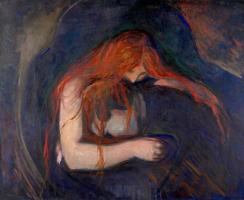Goya's painting May 3, 1808 in Madrid: history, analysis and meaning
Picture On May 3, 1808 in Madrid, also know as The executions on the mountain of Príncipe Pío or The shootings of May 3, is an oil canvas painted by Francisco de Goya y Lucientes in the year 1814.
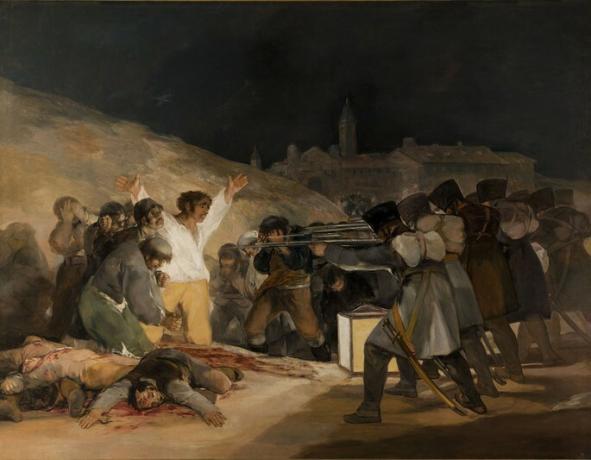
This canvas is one of the most emblematic pieces of the author. In it, Goya sets aside the norms of the neoclassical style to reveal the awakening of a new and personal style.
The work is completed with the painting On May 2, 1808 in Madrid or The fight with the rompers. We present below a brief historical account and analysis of the table, which will give an account of its meaning.
Historic context

After being named emperor in 1804, Napoleon Bonaparte proposed that Spain invade Portugal, an ally of England. Since Spain and England clashed over the occupation of Gibraltar, weakening Portugal was strategically convenient.
King Carlos IV and his Prime Minister Manuel Godoy accept the deal and, in 1807, the French occupation in Spain, without realizing the true intentions of the emperor: to control all the peninsula.
Over time, tensions grew between King Carlos IV and his heir to the throne, Fernando VII, who totally distrusted the Spanish prime minister. On March 17, 1808, the so-called Mutiny of Aranjuez. Its immediate consequence is the dismissal of Godoy, the abdication of the king and the rise of Fernando VII.
Confident in his popularity, Napoleon reinforces the military occupation and soon the French army demonstrates abusive treatment of the Spanish. The people rose spontaneously on May 2, 1808 against the cavalry of French Marshal Murat, in which there was a presence of rompers (Egyptian mercenaries in the service of the French army).
This popular uprising was represented in the painting On May 2, 1808 in Madrid or The fight with the rompers.
The events of May 3, 1808
The French army managed to quickly suppress the popular uprising and began a bloody persecution against the people of Madrid. In the early morning hours of May 3, they gathered the alleged rebels into groups and transferred them to their execution, without the right to trial.
Numerous victims, including innocent, were killed. The executions were carried out in various parts of the city, such as Paseo del Prado, Puerta del Sol, Puerta de Alcalá, Recoletos gate and Príncipe Pío mountain.
Upon learning of the popular uprising, Napoleon, who had reunited Carlos IV and Ferdinand VII in Bayonne, blamed them of the popular uprising and forces them to abdicate in favor of his brother José Bonaparte, whom he arbitrarily names King of Spain.
This was the beginning of the spanish war of independence, also known as the Six Years War, completed in 1814 with the restoration of Spanish absolutism and the return of Fernando VII.
Frame analysis
The executions of May 3 are the events that Goya portrays with the greatest drama possible on the canvas at hand. Everything indicates that this canvas, like its pair, responds to a commission from the liberal regency of Luis María de Borbón y Vallabriga, who was preparing to receive King Fernando VII.
The work is divided into two sections by a sort of diagonal. In the left diagonal section, the light becomes manifest. On the right diagonal, darkness and shadows dominate. Without a doubt, Goya sends a message with it: the light accompanies the people in their genuine resistance, while the French government acts in the dark.
The French firing squad
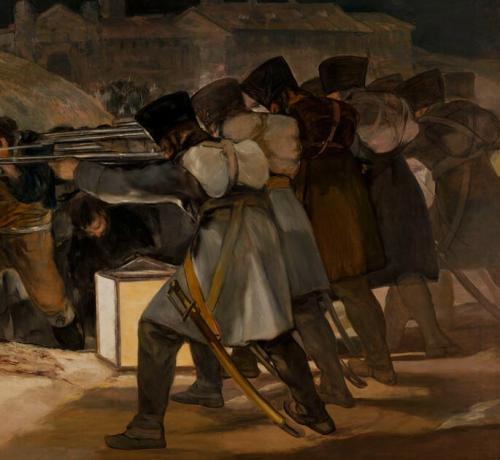
The French army, absolutely ordered, appears lined up in perfect formation. None of his soldiers have a face. Goya has thus represented the "dehumanization" of him. They all turn their backs on the viewer, who has become a witness to the deadly scene. Aligned all his rifles, whose horizontality breaks the diagonals of the canvas, they seem, according to a sign guide from the Prado Museum, an "efficient killing machine".
Their uniforms, in shades of brown and gray, have a treatment cezannesco. The painter has eliminated volume and chiaroscuro, opting for thick lines that form flat masses of color. Thus painted, the soldiers look like a wall of death, closed, impenetrable, flat and gray.
For the Spanish artist Concha Jerez, whose testimony has been collected in a video on the website of the Museo del Prado, Goya has advanced almost a century to the style of Cézanne and the cubist style later. The victims represented on the left diagonal contrast in flagrant contrast with the firing squad.
The victims

Compositely, those sentenced to death have neither order nor line, chaos dominates the section. Characters do not possess war attributes such as weapons or uniforms. A clear inequality between the sides is evident.
Four groups are distinguished among the victims, which break the linearity: the main group is in the center of the section and they remain on their knees. Another group is on the right waiting their turn. At the base of the image, lie those already murdered. But to the left in the background, a shadow is discernible. It looks like a woman holding someone in her arms, almost like a piety.
The victims have faces and in them you can see the horror of the death that is coming. Only two of the characters hide theirs, unable to bear the scene. They are all anonymous characters, archetypes of the townspeople who were slaughtered by the French. Among the victims there are neither soldiers nor representatives of the elite.
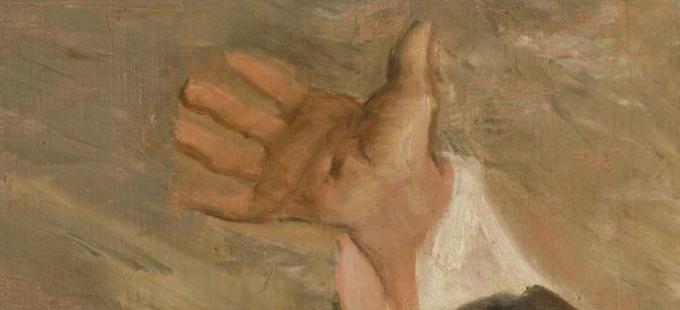
As was customary, Francisco de Goya documented himself very well before making this painting, and he was able to know that On that cruel day, the execution of a single priest had taken place, Don Francisco Gallego and Davila. For this reason, in their midst there is also a character dressed in a cassock, but without signs of ecclesiastical power.
Among these popular characters stands out a man in a white shirt on his knees. He extends his hands in a cross, and on one of them you can almost see a stigma. He has been interpreted by many as a "new crucified", an innocent (hence the white) who has paid the price of Spanish independence with his sacrifice.
His radiantly white shirt is a source of light in the painting, and becomes a symbolic image of innocence and hope at the same time. The viewer's gaze is focused on it. Goya achieves this by means of a thick and coarse line of white, without disguising the pictorial procedure, breaking with the concept of the neoclassical finish. It is the prelude to the stroke impressionistic which is still very far from appearing in history.
The bottom

The scene seems to be framed in a real space: the mountain of Príncipe Pío, although some interpreters differ in their observations. In the background, two structures can be seen. Apparently it is the convent of Doña María de Aragón and the Prado Nuevo barracks, nowadays non-existent.
In the center of the canvas, spots and indefinite lines seem to show a crowd of people. It is not clear who it is. For the artist Concha Jerez, a coherent hypothesis is that Goya represented the elites who remained outside the people's zeal to defend the cause of the kingdom.
The horizon of the upper strip of the painting is finished off by a gloomy night, without the firmament showing even a single star. Mourning invades the Madrid sky, but in the heart of the town the light shines.
Set
The use of line is diverse in this painting and responds to the expressive needs of the painter. In some groups, like the French soldiers, the line is clearly visible. On the other hand, in the character in white, the line practically disappears and the lines remain open and unfinished (see detail of the hand).
With complete freedom, Goya gives an expressive use to plastic language, and not only to the subject of composition. For this reason, critics often see in this painting a turning point in the painter's work that will be consolidated in the black paints of the last years of him.
Of a neoclassical style, still present in paintings such as The family of Carlos IVWith this canvas, Goya orients himself to a pre-romantic sensibility and even seems to go beyond time, guessing the paths of fin-de-siècle art.
Biography of Francisco de Goya y Lucientes
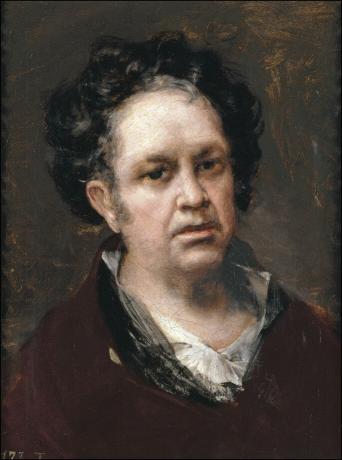
The Spanish painter and printmaker Francisco de Goya y Lucientes was born in Fondetodos, Zaragoza, on March 30, 1746. In Zaragoza he received his initial education and took his first art lessons at the Luzán Workshop.
He married Josefa Bayeu on July 25, 1773, with whom he had seven children, but only one survived to maturity. He moved to Madrid in 1775. In that city, he continued his training in the workshop of his brother-in-law Francisco Bayeu, who also offered him a job at the Royal Tapestry Factory.
He also studied at the Academia de San Fernando from 1785 and, a little later, in 1789, the court of Carlos IV hired him as an official painter. Since then, Goya has stood out as a portraitist for the royal family as well as for the aristocracy of Madrid.
Indeed, in 1799 one of the most famous royal portraits of him would culminate: The family of Carlos IV. However, Goya was not necessarily a painter who was complacent with the powerful. Halfway between neoclassicism and romanticism, the painter did not shy away from the temptation to sneak irony and criticism into official portraits of him.
In fact, as early as 1799 Goya had completed the series of engravings Whims, in which he represents his critical appreciation of the inconsistencies of social elites: the nobility, the clergy, and the aristocracy. The germ of expressive freedom had already sprouted in him. For this reason, Goya is considered a precursor of the romantic spirit, which was about to make its appearance.
Between 1810 and 1815 he made the series of engravings The disasters of war, in which he documents in great detail and precision the horrific deaths and evils that took place during the period of the Spanish War of Independence.
In the year 1815 Goya faced an inquisitorial trial because of the painting The naked maja. To this was added that, after the restoration of the crown, Fernando VII viewed Goya with distrust for having continued to be associated with the Royal House during the war. His age, his illness, and the absence of evidence of personal gain all worked in his favor. Still, that was the last year in the service of royal power. His private activity was not affected.
A short time later, in 1819, a health relapse left him deaf. During this period, the production of his famous black paints. Among some of them we can mention Saturn devouring his children, The coven Y Cudgel duel.
The transformation of his style made him an absolutely revolutionary and visionary artist. In his work, features that announce romanticism and even impressionist and post-impressionist elements can be seen.
Francisco de Goya y Lucientes moved to Bordeaux, France, in 1824. There he remains until his death on April 16, 1828. Ahead of his time, Goya is revealed today as one of the most emblematic figures of modern art.
References
- Arimura, Rie; Ávalos, Erandi and Ortiz Silva Ireri (coord.) (2017): Francisco de Goya: a look from Mexico. Mexico: National School of Higher Studies, University of Morelia. Recovered in: http://www.librosoa.unam.mx/
- Mena Marqués, Manuela B.: On May 3, 1808 in Madrid: the executions of patriots from Madrid, El [Goya] in Official Website of the Prado Museum. Recovered in https://www.museodelprado.es/
- Francisco de Goya y Lucientes in the Official Website of the Prado Museum. Various multimedia materials. Recovered in https://www.museodelprado.es/

